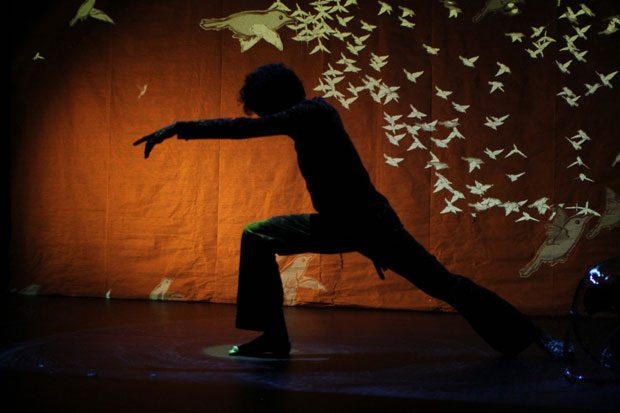
© Ars Electronica Linz GmbH / Veronika Pauser. (Click image for larger version)
Aakash Odedra Company
Inked, Murmur
New York, Baryshnikov Arts Center
22 October 2015
www.aakashodedra.co.uk
whitelightfestival.org
bacnyc.org
The Sound and the Fury
One can understand the impulse to break away from traditional forms such as flamenco or Indian classical dance, with their rules and conventions, in order to create something that feels more personal and of-our-time. But the impulse, as admirable as it is, does not guarantee success. Aakash Odedra’s two-part evening, presented at the Baryshnikov Arts Center this week as part of Lincoln Center’s “White Light Festival” is a perfect example of what can happen when an exceptional practitioner is led astray by an excess of theatrical ideas and special effects.
About the brilliance of Odedra’s dancing there is no doubt. Born and raised in Birmingham, England, he studied kathak and bharatanatyam from a young age in the UK and in India. His solo at Fall for Dance last year (Nritta), filled with sudden leaps and quicksilver movements, was a highlight of the festival. In recent years he has been mentored by another kathak innovator, Akram Khan, a champion of collaborations with artists from various disciplines. In the two works that make up Odedra’s White Light evening, Inked and Murmur, there are passages of breathtaking articulateness. He can balance on in his big toes and walk on the tops of his feet; he can fold his body into strange origami shapes; he can tumble and spin on his knees until the cows come home.
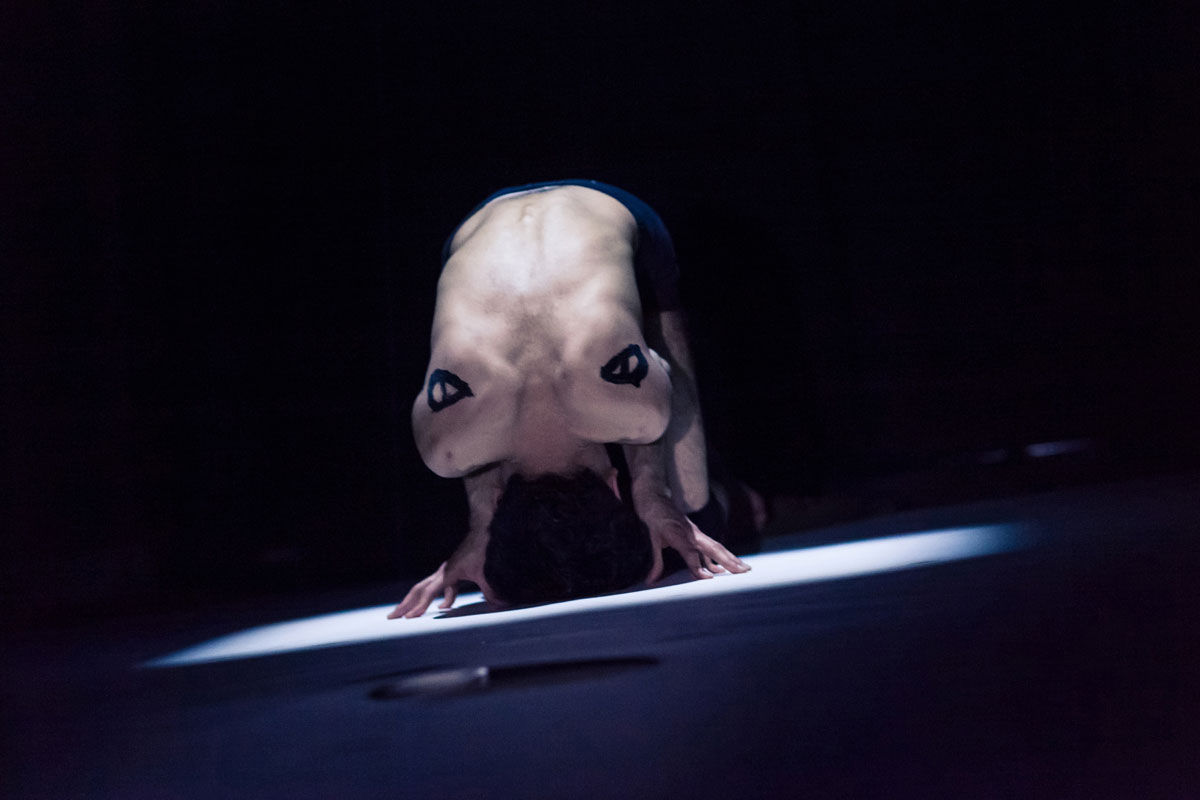
© Sean Goldthorpe. (Click image for larger version)
The first solo, Inked, in particular, is a marathon. Choreographed for Odedra by the French dancemaker Damien Jalet – a veteran of collaborations with European choreographers like Sidi Larbi Cherkaoui and Sasha Waltz – it suggests a meditation on the theme of tattooing and mourning. (A program note explains that it was inspired by the tattoos worn by Odedra’s late grandmother.) The dancer dips his fingers in dark paint and smears it on his body in mysterious patterns, then twists himself into strange, inhuman shapes – his back becomes a face, his fingers tremble like probosces. Or he folds his legs under him and spins like a top, until you’re not sure if he has legs at all. A kind of cool ambient drone (by a group known as Loscil) gradually crescendos until finally, arms still pulsating, the dancer’s body disappears into the dark.
It is by far the most interesting of the two works, despite its excessive reliance on the body as a terrain of special effects. But at least it uses the body. Murmur, on the other hand, seems to use almost everything but the body. It is far more seduced by interactive projections, curtains, fans, spoken lines, flying clouds of dust, paper. Murmur is a collaboration between Odedra and Lewis Major, also based in the UK. (He too has worked with Cherkaoui, as well as Khan and Russell Maliphant.) Its subject is dyslexia, specifically Odedra’s childhood struggles with spelling and recognizing words. At various points Odedra talks about his trouble with spelling, including the spelling of his own name. Then he launches into a prolonged duet with a series of digital images projected onto a set of white curtains. For most of the piece, Odedra disappears into a vortex of digitized images, as incorporeal as a figure on a screen.
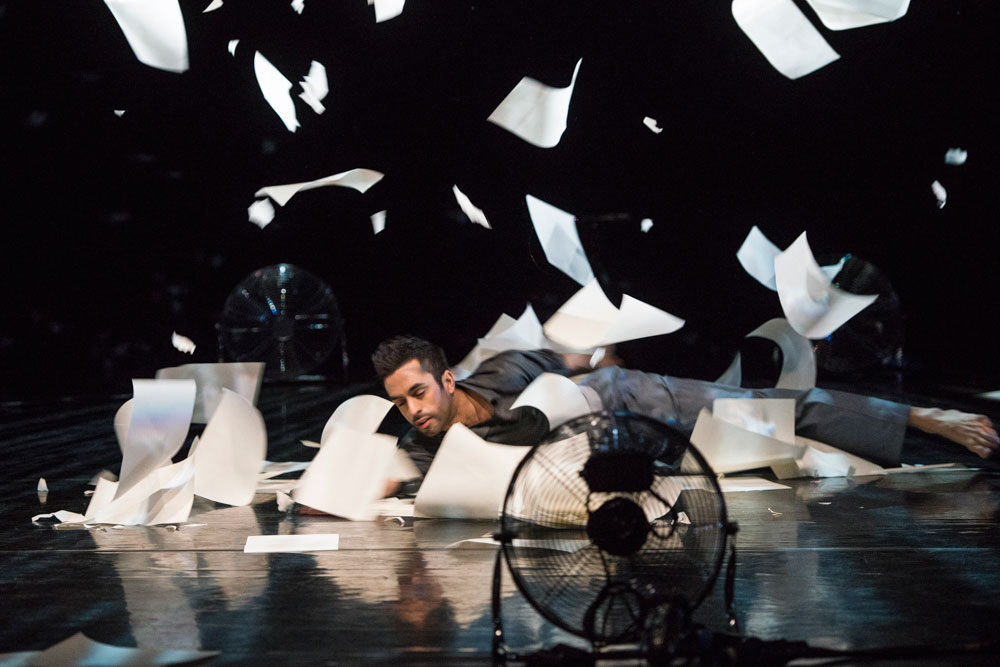
© Foteini Christofilopoulou. (Click image for larger version)
Add to that another affectless electronic score and it becomes a cautionary tale about the temptations of technology and the lure of big ideas. The very thing that makes Odedra exceptional – the extraordinary dynamism of his dancing – is rendered almost irrelevant, swallowed up in a vortex of smoke, projections, flying fabric, and paper.









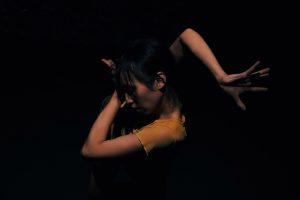
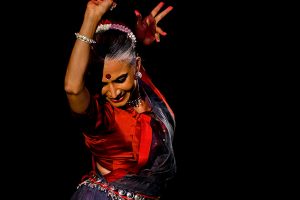
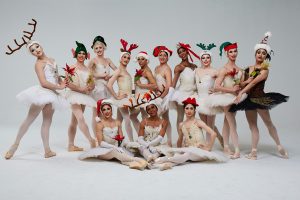
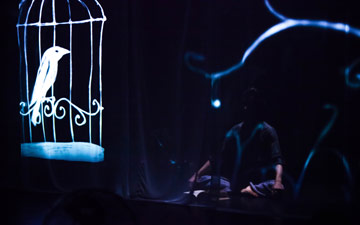
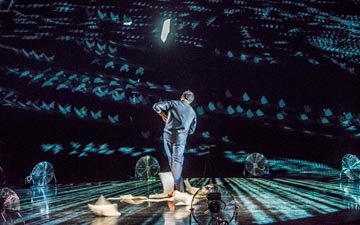


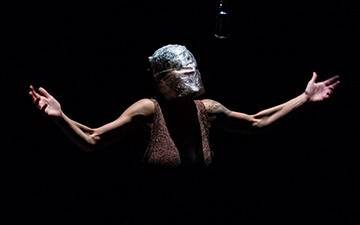
You must be logged in to post a comment.